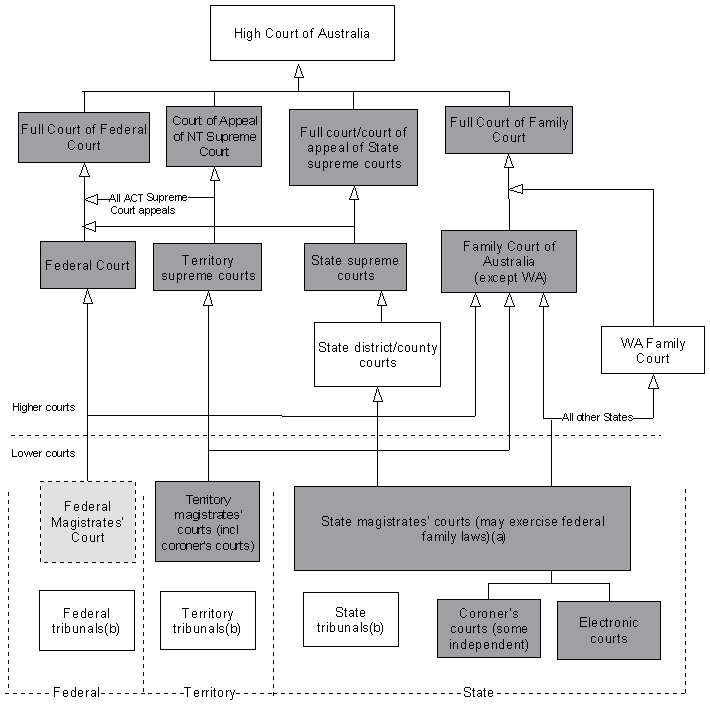Courts exist in all Australian States and Territories for the hearing of both criminal and civil cases. A criminal case arises from a charge laid by police or other prosecuting authorities, and is an allegation of a breach of the criminal law. A civil case, by contrast, is a dispute between two or more individuals or corporations, in which one side is seeking a legal remedy for an injury or loss from the other party who is alleged to be liable.
The courts are arranged in a hierarchy, with the bulk of less serious matters being heard before magistrates and more serious matters being heard before judges. In the civil context, the seriousness of a case is usually determined through the amount of money sought in compensation, while for criminal matters seriousness is determined by the nature of the offence alleged. Figure 11.13 illustrates the arrangement of the court system in Australia.
The hierarchy of courts also applies to the system of appeals. Where grounds for appeal exist, then appeals are available to the unsuccessful party in a civil matter, and to the defendant in a criminal matter, from all levels of court. The High Court of Australia is the highest court of appeal for both criminal and civil cases.
While the civil jurisdiction and system of appeals are important aspects of the justice system, this section focuses on the criminal jurisdiction of the courts.
11.13 HIERARCHY OF COURTS

| The Administration of these courts is covered by the Review. |
| Arrows indicate the flow of cases on appeal. |
| Indicates a separation between State/Territory or court jurisdiction. |
(a) Appeals from lower courts in NSW go directly to the Court of Appeal in the NSW Supreme Court.
(b) Appeals from Federal, State and Territory tribunals may go to any higher court in their jurisdiction.
Source: Steering Committee for the Review of Commonwealth/State Service Provision, Report on Government Services 2001.
 Print Page
Print Page